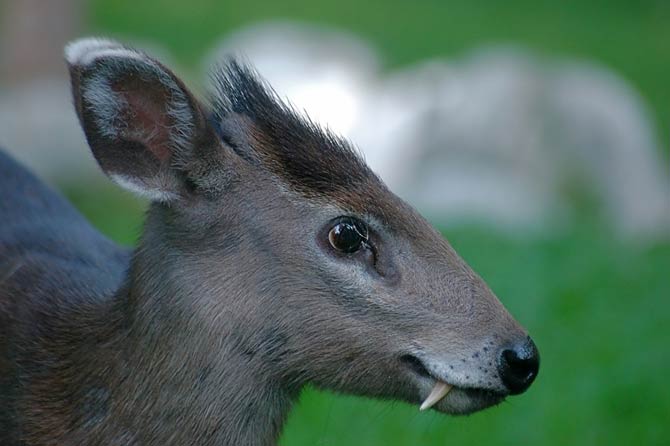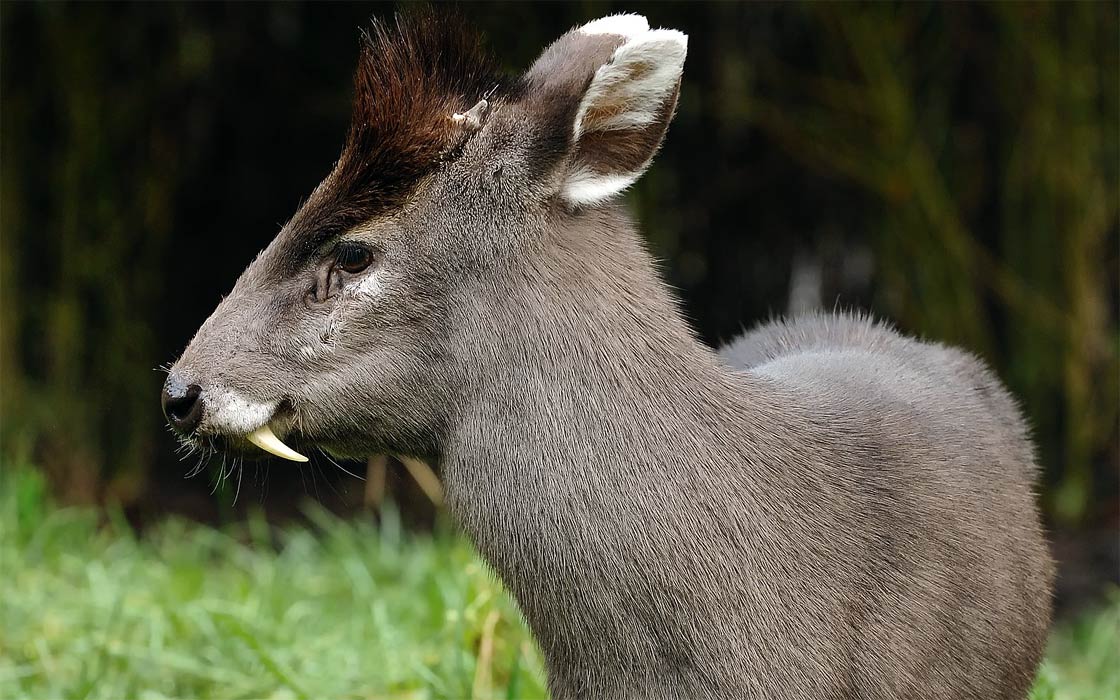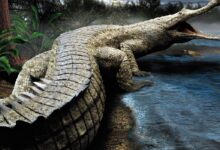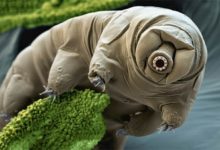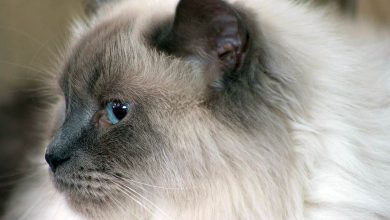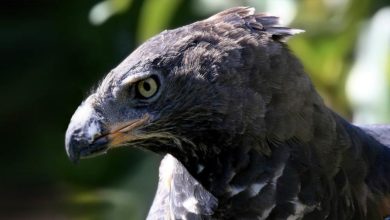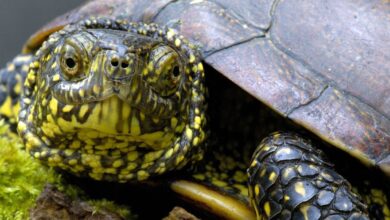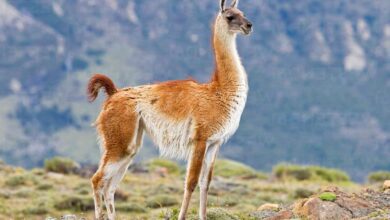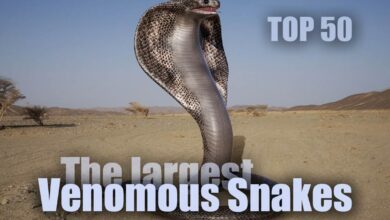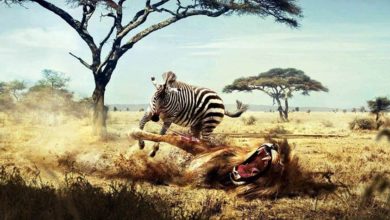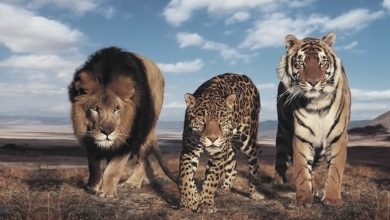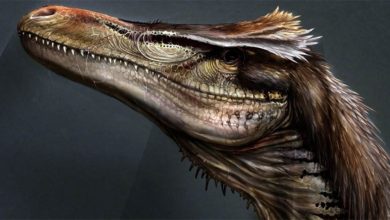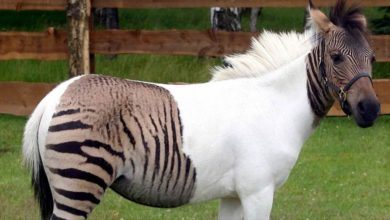Tufted deer – deer with a “boar’s snout”
The word “deer” brings to mind a majestic animal with an impressive antler. But has anyone thought of a small creature with fangs almost like a boar? And yet such an animal exists – it is a tufted deer. Despite its not very impressive size, the tufted deer is one of the most interesting deer – due to the fang-like canines sticking out of the male’s mouth. Their appearance can be deceiving – it is a gentle and very shy animal that feeds exclusively on plants. It lives exclusively in central China. It is now considered a near threat of extinction.
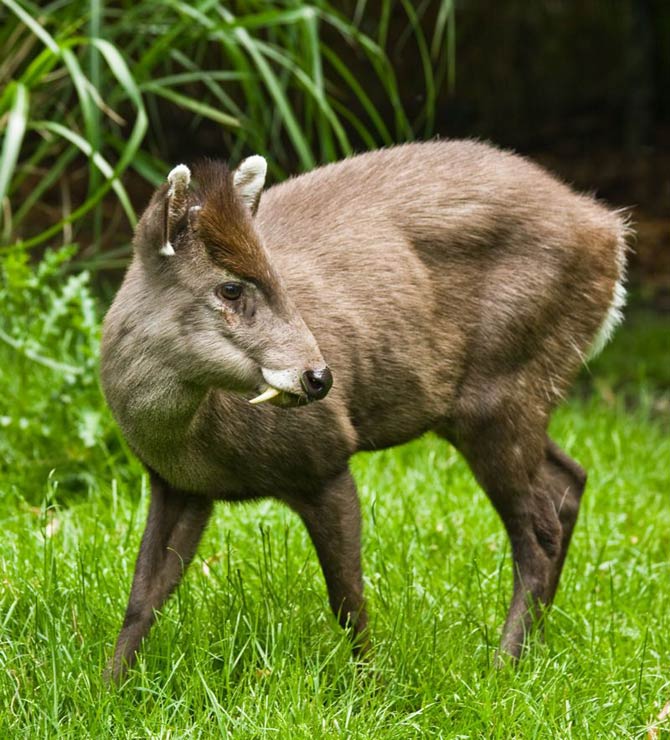
Classification
The tufted deer is the only representative of the genus Elaphodus. It was first scientifically described in 1872. There are three or four subspecies, differing slightly in size and coloration.
- Classification
- Kingdom: Animalia
- Phylum: Chordata
- Class: Mammalia
- Order: Artiodactyla
- Family: Cervidae
- Genus: Elaphodus
- Species: Elaphodus cephalophus
- Subspecies:
- Elaphodus cephalophus cephalophus – the largest subspecies, China, Burma
- Elaphodus cephalophus michianus – China
- Elaphodus cephalophus ichangensis – Central China
- Elaphodus cephalophus forciensus – a questionable subspecies
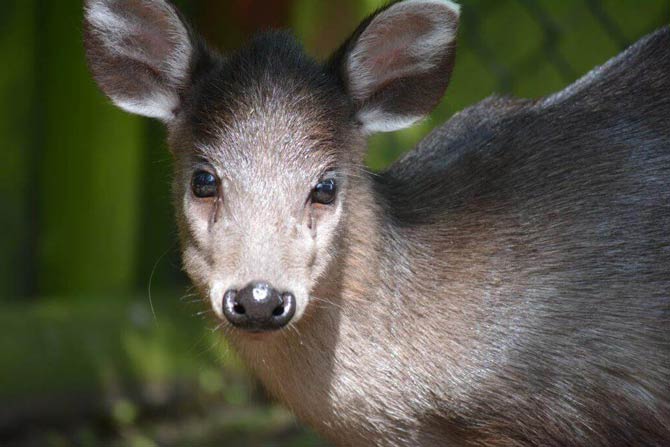
Characteristic
Appearance
The tufted deer is somewhat similar to the muntjac (barking deer or rib-faced deer), but with longer legs and neck, which makes its silhouette slimmer and more straight. The ears are oval and very large in proportion to the size of the head. His coat is rough, his hair is short and stiff. It is almost black in winter, and turns chocolate in summer. The lips, ear tips and underside of the tail are white. On the forehead and the upper part of the neck, the hair is long, up to 17 cm, and forms a kind of crest which, in males, generally covers the small antlers. This tuft gives the head a pointed appearance and has been immortalized in the species name.
The most characteristic feature of the crested deer, however, are strongly developed male tusks, resembling the teeth of predators. They are specifically the canines of the upper jaw. They can grow up to 2.6 cm.
The tufted deer is slightly larger than the muntjac, but remains one of the smallest deer. The height at the withers is 50-70 cm, the length of the body is 100-160 cm (3.3 – 5.2 ft), and the weight is 17-30 kg (37 – 66 lb). The tail is short and rounded, measuring up to 10 cm (4 in). The antlers appear only in males, they have the shape of short spikes, almost completely hidden in the hair tip.
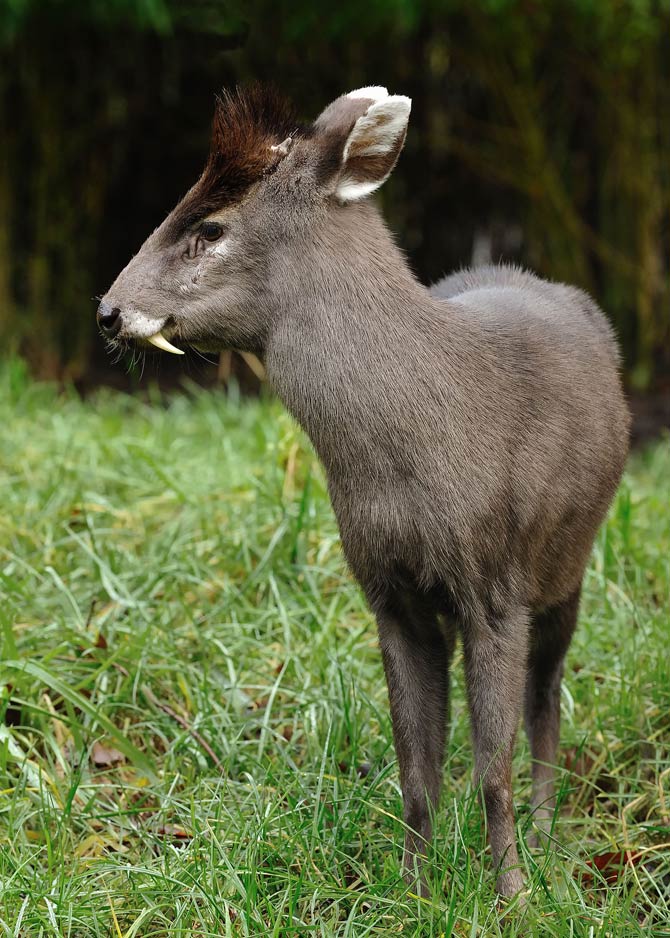
Occurrence
The tufted deer lives almost exclusively in China. Its range extends from the coast to eastern Tibet, mainly in the south of the country. In the past, it was found further in the north, e.g. in the province of Myanmar, as evidenced by ancient records dating back even hundreds of years. Today, however, finding these deer there is unlikely.
The habitats of the tufted deer are humid forests located at high altitudes – 500-4,500 m above sea level, they can be found up to the tree line. They live in both evergreen forests and forests that shed their leaves for the winter – wherever there is lush undergrowth and there is no shortage of water sources. The presence of natural salt licks also increases the chance of their occurrence.
This species usually lives in natural forests, but it is also found in areas where people live, as long as they are not too numerous and their activities do not significantly affect the environment. It is also seen in partially transformed areas – fields, pastures and orchards.
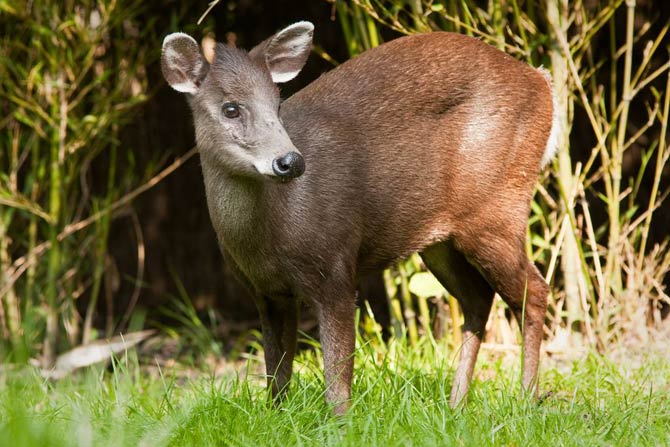
Lifestyle
Tufted deer are usually loners, although they are also found in pairs. They are active at dawn and dusk. Females move along irregular routes in territories designated by males, which fiercely defend their area against other males.
These fawns are very timid. They choose places rich in hiding places and places where they can at least crouch and hide, being invisible due to their coloration. They are very easily disturbed; when frightened, they make voices similar to snarls or barking, and quickly run away, jumping like cats.
Reproduction
The mating season of the tufted deer lasts from September to December. During this time, the male’s growls are louder than usual, and they fight more fiercely for territory. Pregnancy lasts about 6 months and ends in the early summer with the birth of one or more rarely two newborns. The young reach sexual maturity at the age of 1-2 years. Wild individuals live up to 12 years.
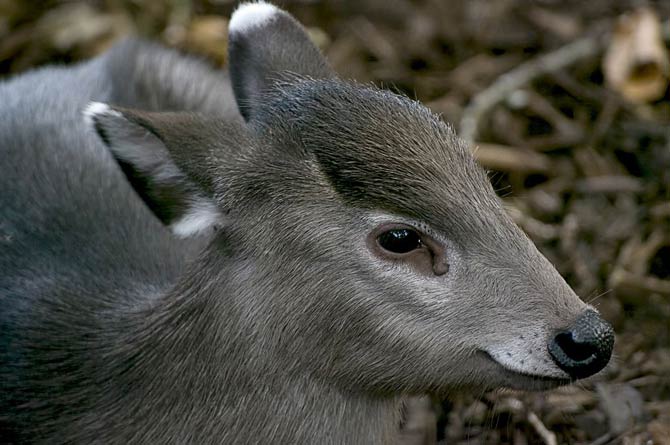
Tufted deer and a man
In 1998, research was carried out, which shows that the size of this species is approx. 300-500 thousand. individuals, assuming that due to changes in the environment, a significant and continuous decrease in the number of deer may be expected. China is going through a period of rapid economic development and rapid changes that often take place completely without care for nature, which obviously affects the living environment of deer. Therefore, it was included in the list of Near Threatened species (NT – Near Threatened according to the IUCN classification).
The fact that in China virtually every large animal can be hunted in some place also contributes to the reduction in the size of the species, and the tufted deer is no exception. Besides, its skin is valued as a high-quality material for making clothes, especially nowadays, when other, more endangered species of small deer are strictly protected.
It is true that the tufted deer is protected in some provinces, but it is not protected by national law. At the moment, however, it is not known what remedial measures can be taken to increase the effectiveness of the protection of this species.
The tufted deer is included in the US Species Survival Plan, under which a network of zoos and aquariums work together to preserve endangered species from extinction. There is a real risk that the genetic diversity of this deer will decrease by as much as 90% within 10 generations.
Unfortunately, the tufted deer does not tolerate captivity, so it is planned to transfer some of the deer to replacement ecosystems, ensuring that the designated individuals are capable of reproducing.

Detailed data / dimensions (size)
Tufted deer (Elaphodus cephalophus)
- Body length: 100–160 cm (3.3 – 5.2 ft)
- Height at the withers: 50–70 cm (19.7 – 27.6 in)
- Canines: 2.6 cm (1 in)
- Tail: 10 cm (3.9 in)
- Weight: 17-30 kg (37.5 – 66 lb)
- Litter: 1-2 cubs
- Sexual maturity: between the first and second year of life
- Lifespan: 10-12 years in the wild
Interesting facts
- In many zoos, the tufted deer is regularly awarded the title of the nicest zoo animal.
